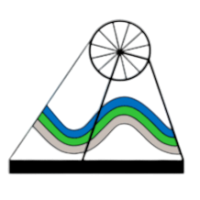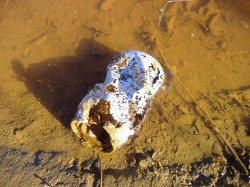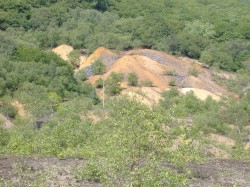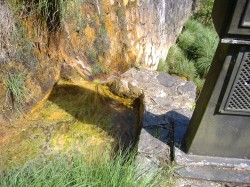What is Acid Rock Drainage
Acid Rock Drainage (ARD) is formed when a rock mass containing sulfide minerals weathers in the presence of oxygen and moisture. This process of oxidative weathering can result in the releases of sulfuric acid and associated metals into the environment.
ARD occurs naturally through the weathering and erosion of sulfide rich rocks. Sulfide minerals commonly occur in close association with commercially valuable mineral deposits such as gold, copper, zinc and iron. For this reason the natural process of weathering may be significantly accelerated through mining processes. Acid Mine Drainage (AMD) is commonly used to describe ARD resulting primarily from mining processes.
The acid produced during ARD / AMD is sulfuric acid (H2SO4). This is the same type of acid as used in car batteries and in some cases the acid concentration ("strength") can be similar. It is common for ARD / AMD to be accompanied with toxic concentrations of metals such as arsenic, aluminium, cadmium, copper, iron, lead, nickel, and zinc. These metals are often contained within sulfide minerals themselves (i.e. zinc within sphalerite) and are released from the mineral during the weathering process. In addition, as the solution becomes more acidic (the pH decreases) an increasing concentration of metals may be dissolved in the water and released into the environment. Due to the potential for metals leaching, ML is commonly added after ARD or AMD (i.e. Acid Rock Drainage and Metal Leaching).
The term acid can be misleading as not all sulfide minerals generate acidity when they oxidise, in addition, acidity that may be generated may rapidly be neutralised through acid-neutralization reactions. Carbonate minerals such as calcite (CaCO3) are the most common neutralising minerals and in some cases can be present together with acid generating sulfide minerals. Carbonate minerals readily dissolve neutralising acidity through the release of carbonate ions into solution. Carbonate neutralisation often results in a neutral pH solution and limits the dissolved concentrations of many potentially toxic metals through mineral precipitation and adsorption of metals to mineral surfaces.




